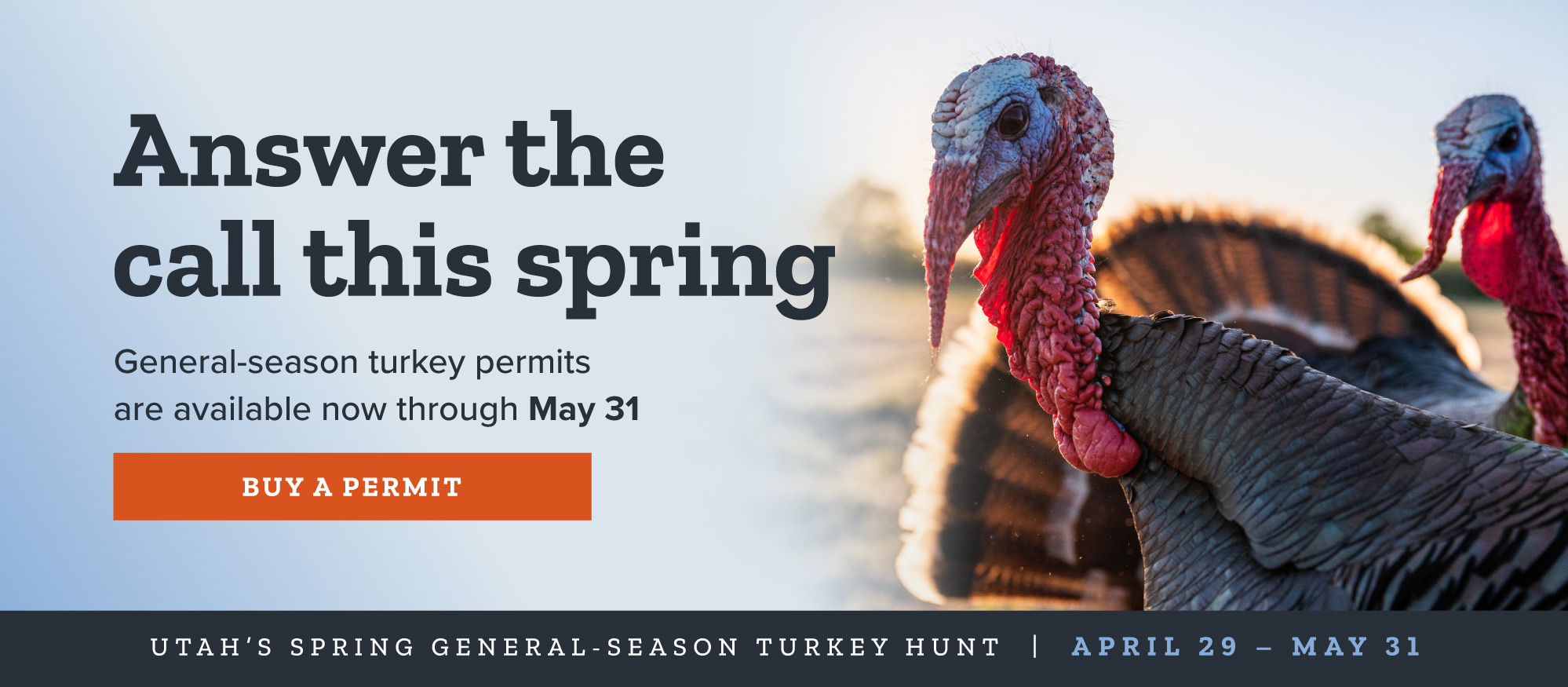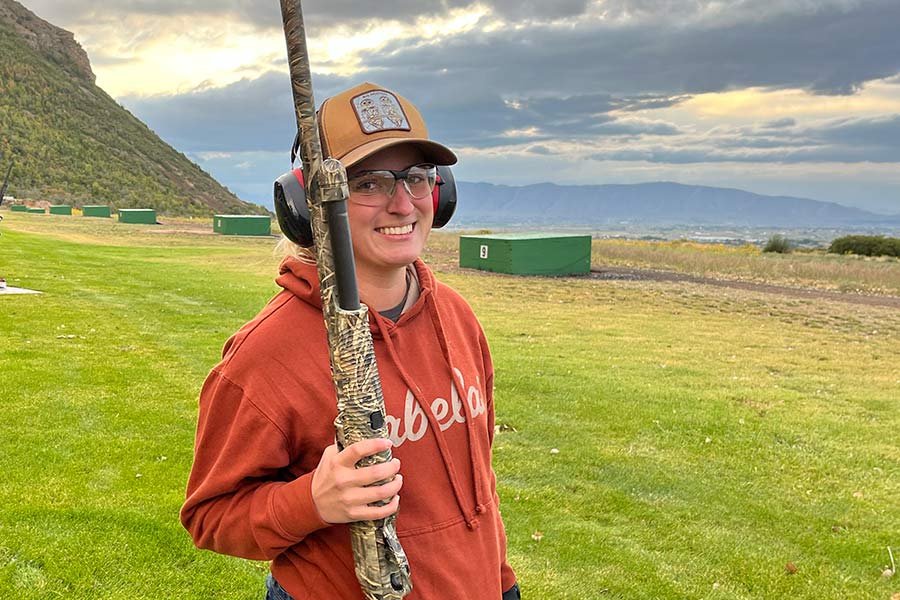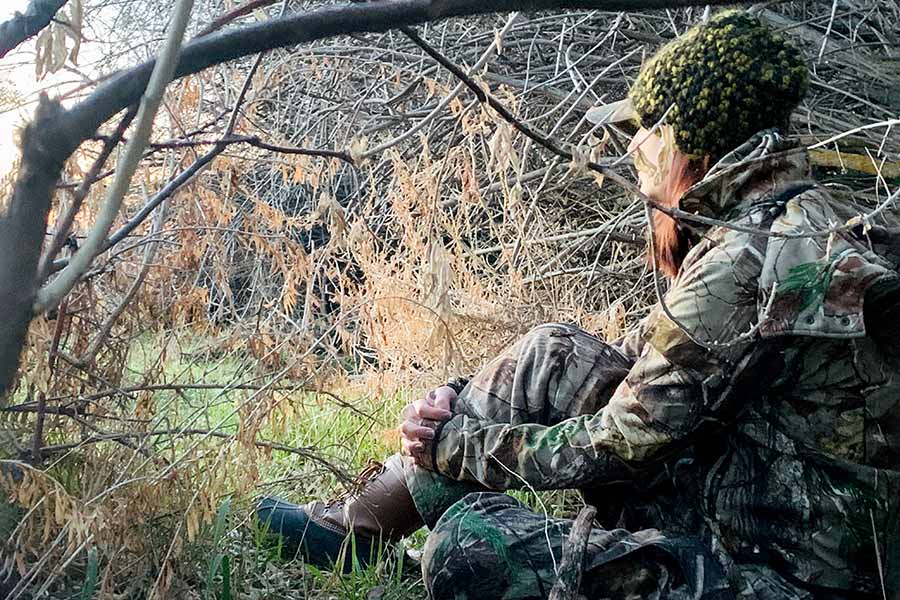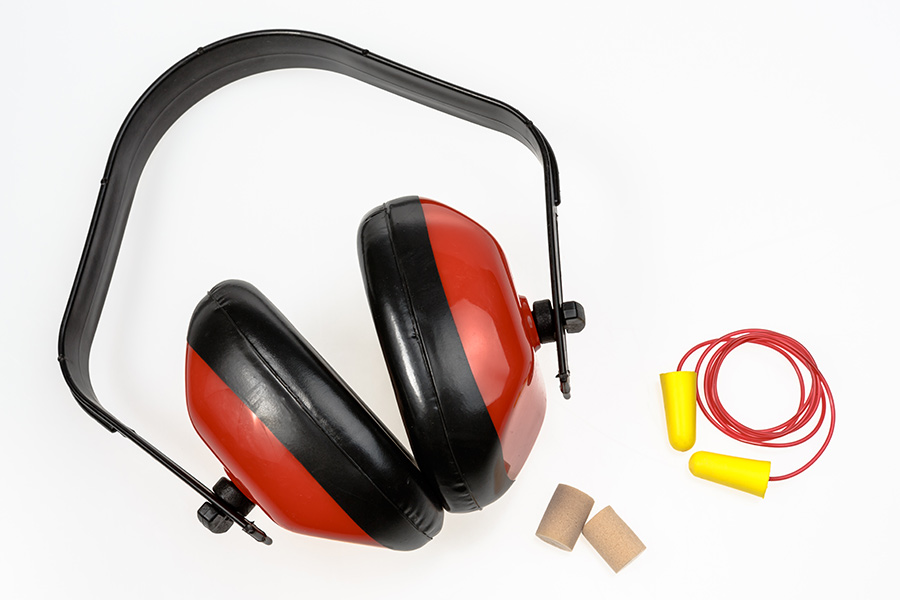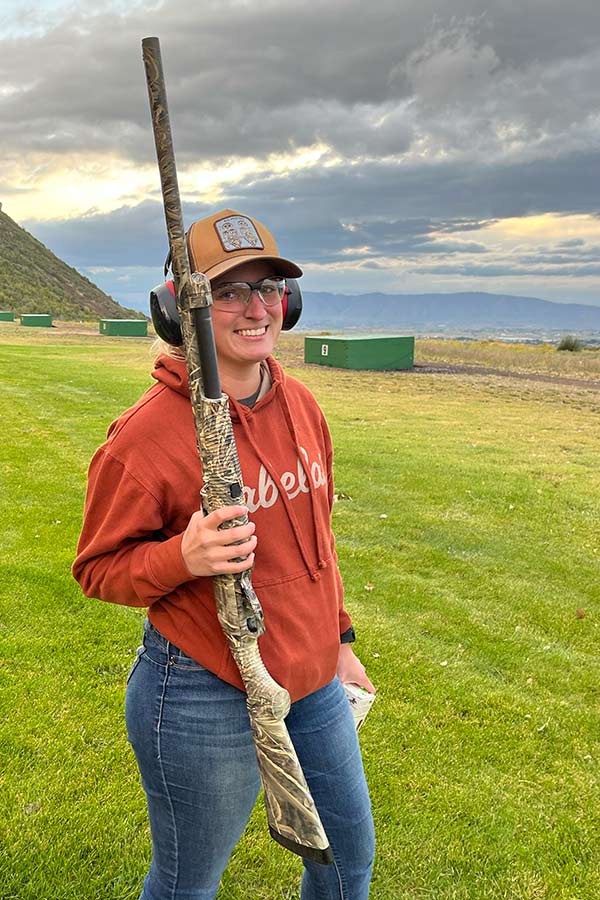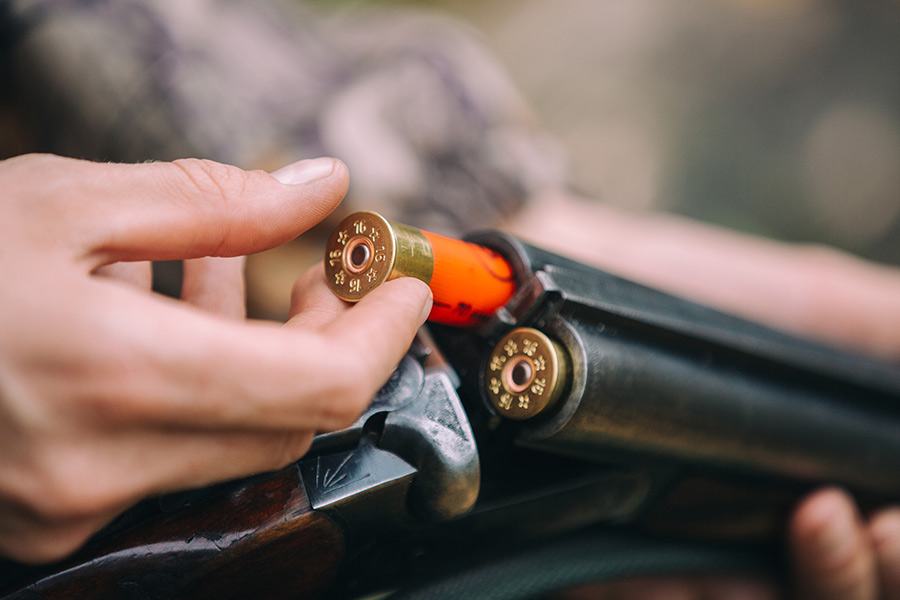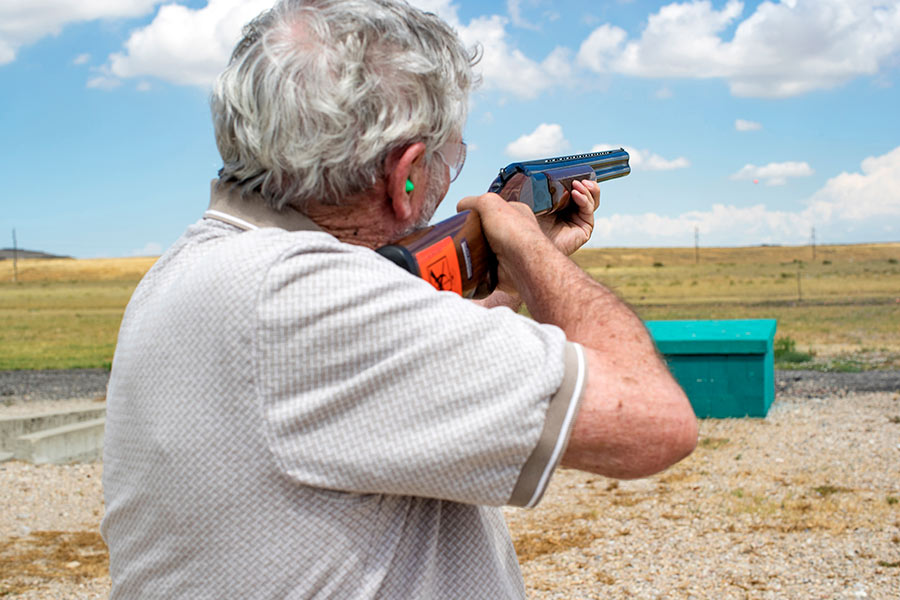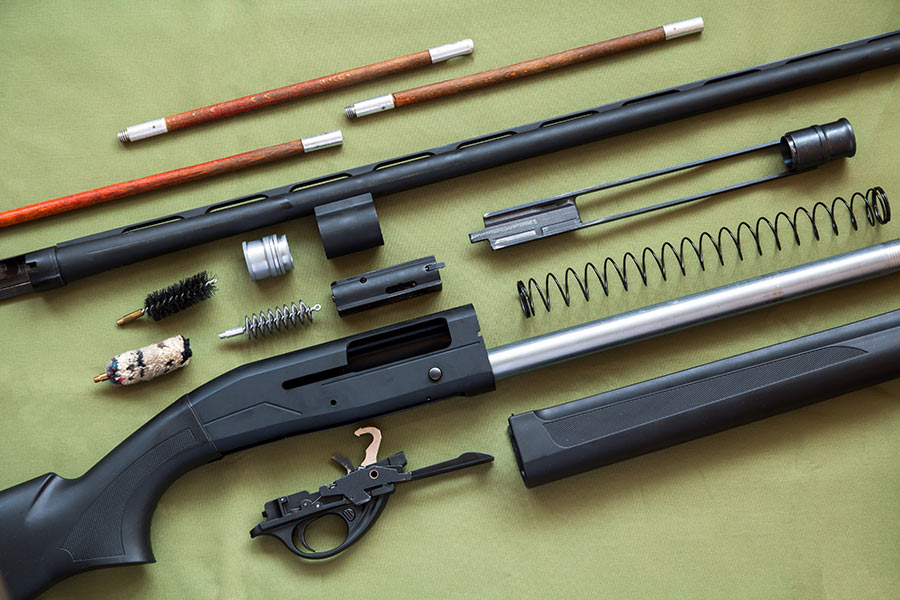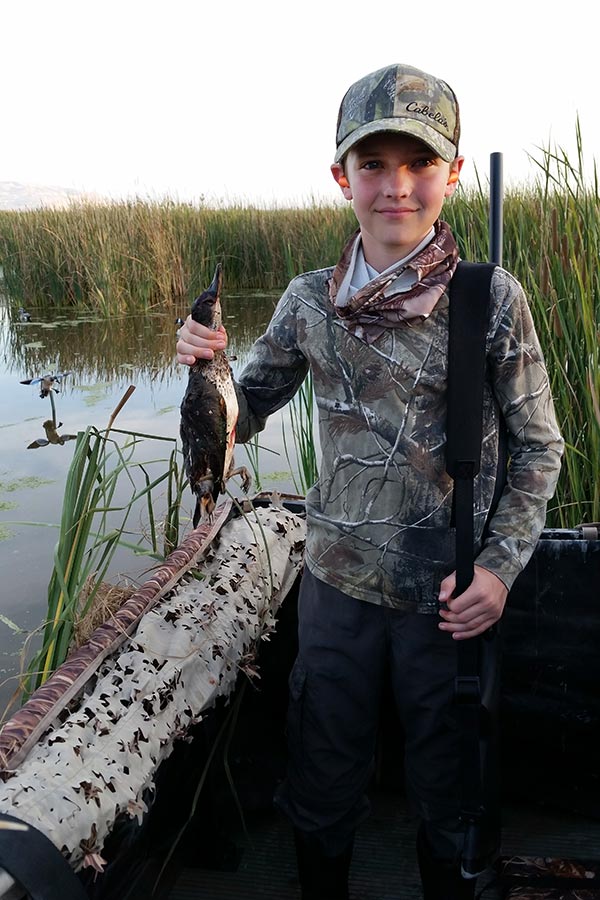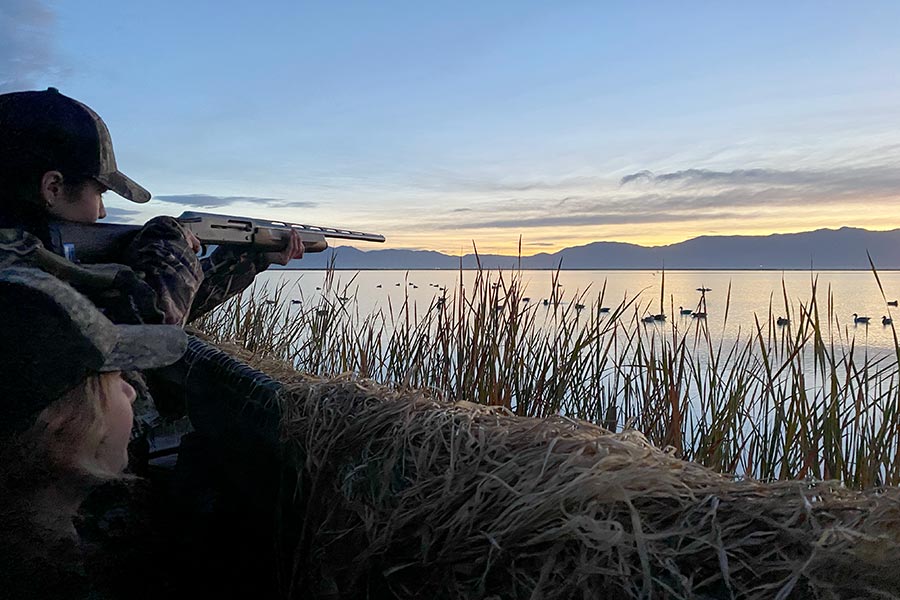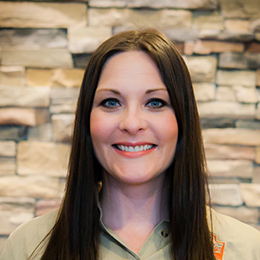Learn to hunt: shotguns
Tips for getting started hunting waterfowl and upland game
Tonya Kieffer-Selby
Northeastern Region Conservation Outreach Manager
I love the pure connection of being outside, whether I'm alone or in the field with fellow hunters. From sitting in a duck blind, to hiking your guts out for a glimpse at your target animal, you get a chance to really immerse yourself in your surroundings. There's something about how the air feels on your face, the nostril-tingling smells of the marsh, and sensing your heartbeat at the perfect moment when you're taking a shot — it really makes you feel alive.
Many beginner hunters start developing their skills in the field with upland game or waterfowl hunts, which have relatively long seasons in Utah and usually don't require expensive equipment to get started hunting effectively and safely. Please keep in mind the advice shared here is very general and geared toward beginner shooters, and we don't endorse or get any kind of kickback from the brands or products mentioned in this post.
Here are some frequently asked questions about how to get started in the exciting and fun sport of shotgun shooting.
Question: What are the very basic equipment needs for someone getting started shooting with a shotgun?
Answer: To get started, you will need:
- a shotgun
- shotgun shells that are correctly matched to your firearm
- eye and ear protection
- a good gun-cleaning kit
When shooting firearms, always use eye and ear protection. This wasn't something that was stressed when I was a kid learning to shoot with my family, and I do regret it now. My husband and I both have minor hearing loss from not protecting our ears enough in our early years of shooting. (Note: Most gun ranges require eye and ear protection for shooters and observers.)
We'll cover choosing a shotgun, selecting the appropriate ammunition and cleaning your shotgun, below.
Question: What do I need to consider — such as size, cost or other features — when choosing my first shotgun?
Answer: Nothing replaces the actual experience of shooting a shotgun for the first time. It's shocking! It's exhilarating! It's loud! And it can all be a little scary for someone who has never done it before. If you have a chance, reach out to someone who has different gauges and types of shotguns and actually test them in the field or at a gun range so you better understand what to expect when you purchase one.
Using an appropriately sized shotgun matched to the stature of the shooter is very important. For children and smaller-framed individuals, you may consider using a 20-gauge shotgun, rather than the 12-gauge shotgun you commonly see used by larger, adult hunters. A 20-gauge shotgun has less recoil when the gun is fired, it's lighter than a 12-gauge — which is helpful if you'll be doing a lot of hiking or spending a long day in the duck blind — and it is often easier/faster to maneuver if you need to make a quick follow-up shot.
Entry-level shotguns are not too expensive — between $250–$450 for a brand new one — and most gun counter staff will help you pick a firearm based on your needs. For example, they may suggest a different type of shotgun depending on whether you plan to mostly duck hunt or intend to focus on competition shooting for sporting clays. As a beginner, you could spend a small fortune on a higher-priced firearm, but until you learn how to properly use it — and fix it when it malfunctions — you are probably better off starting with the basics. (Tip: Keep an eye out for sales, especially around holidays.)
Brands like Remington and Mossberg are great guns to start with and will last you for years, as long as you take good care of your shotgun and clean it regularly. My first gun was a Remington 870 pump-action shotgun and it still holds some pretty valuable memories for me. Though I've upgraded over the years, I still enjoy taking my first gun out to shoot from time to time.
Question: What kind of shotgun shells should I use?
Answer: Using correctly matched shotgun shells for your firearm is incredibly important — both for your safety and for the performance of your shotgun. Make sure the shells you purchase match the gauge (barrel diameter) of your shotgun and the length of your gun's chamber (which determines the shell length). The optimal shot size and weight will vary depending on what you're intending to shoot (geese, pheasant, shooting clays, etc.). Note that some shooting ranges only allow a certain size of shot, so make sure to check that you have the right shotgun shells before making a visit.
All of this may seem intimidating at first, but these basics are covered in the Utah Hunter Education course. Also, don't be afraid to ask the gun counter staff lots of questions about your shotgun and the kind of shells you should use with it.
Keep in mind that depending on where you are shooting, there may be rules about using nontoxic shot (specifically, lead-free metals) to protect the health of waterfowl and other migratory wildlife. For example, you may only discharge a firearm with nontoxic shot when hunting waterfowl or coot in the U.S., and at many federal refuges and state lands, you may only have nontoxic shot in your possession. If in doubt, check the Utah Waterfowl Guidebook, Utah Upland Game and Turkey Guidebook or U.S. Fish and Wildlife Service for details.
Question: Where can I go to practice shotgun shooting? What are some basic techniques to keep in mind?
Answer: Practice, practice, practice is key to becoming a safe, accurate and confident shooter. You should visit a local shooting range and practice using your shotgun several times before you head out into the field. There are shooting ranges around the state — including DWR-run Lee Kay and Cache Valley public shooting ranges — and I highly recommend going to a skeet range or clay shooting range and getting used to the repetition of shooting.
One thing that all beginners experience at some point is not holding the butt of their shotgun tight enough to their shoulder. The result is the shotgun stock or butt "kicking" you in the shoulder and/or arm, often resulting in quite a bruise! I've personally done it more times than I care to admit, but with practice, I learned to avoid this mistake. I still do this from time to time and I immediately regret it the next day.
Prepare for shotgun shooting by strengthening your upper arm and shoulder muscles. You can use something as simple as a 3-pound hand weight or bag of sugar. Shotguns aren't exactly light, and you can quickly experience arm and shoulder fatigue if you're not in good condition. You will have a far better — and more comfortable — experience if you strengthen your upper body muscles long before hunting season begins.
Question: How do you care for your equipment to keep it in good condition?
Answer: Ideally, you should clean your shotgun after every use. This is done to ensure your own safety, and to keep your equipment in the best working condition for your next hunting or shooting excursion.
Cleaning your shotgun regularly will ensure that it operates safely and effectively. If not taken care of, your shotgun will build up materials and can rust inside and out, causing possible malfunctions and safety issues down the road. I would recommend cleaning your shotgun a few times with someone who has experience, just so you put your firearm back together the way it should be. I remember the first time I cleaned my shotgun, and it makes me laugh to remember how badly I fumbled through the process. Practice here also makes perfect, so ask for some help, and get to it!
A basic shotgun cleaning kit with supplies can range anywhere from $10–$100. Fortunately, the kit and supplies should last you for several cleanings, so you don't have to include that total cost every time you shoot. As a bonus, the repetition of cleaning will help you better understand your shotgun's mechanics, and you'll gain confidence in knowing what to do if the gun isn't working as it should.
Question: What requirements do I need to meet in order to hunt in Utah? Are there additional requirements if I want to hunt waterfowl, turkey, etc.?
Answer: To hunt in Utah you need to:
- Complete a Hunter Education course if you were born after Dec. 31, 1965.
- Have a valid Utah hunting or combination (hunting and fishing) license.
For some of Utah's bird hunts, you are only required to:
- Have a valid hunting license
- Hunt in specific areas during the designated hunting season
- Observe rules for how many birds of different species you can harvest per day — which is commonly referred to as a bag limit.
Be sure to carefully review Utah's hunting guidebooks for these rules.
However, there are additional requirements if you intend to hunt waterfowl, turkey and some upland gamebirds in Utah:
- All waterfowl hunters ages 16 and older must obtain a federal migratory bird hunting and conservation stamp (also called a duck stamp). There are several ways to purchase a stamp or temporary e-stamp.
- If you are hunting migratory game birds — specifically American crow, ducks, geese, rails, snipe, coot, doves, band-tailed pigeon, sandhill crane or swan — you must also obtain a Utah Migratory Game Bird Harvest Information Program registration number every year, regardless of your age. This registration is free, and you can obtain your Utah HIP number through the DWR website.
- Turkey hunting seasons are in the spring and fall, and you must apply for and purchase a permit to hunt for turkeys. See the Utah Upland Game and Turkey Guidebook for application dates, season dates, permit fees and other details.
- You also need to apply for a permit to hunt the following upland gamebirds: greater sage-grouse, sandhill crane, sharp-tailed grouse, band-tailed pigeon and white-tailed ptarmigan. See the Utah Upland Game and Turkey Guidebook for application dates, permit fees and other details.
- To hunt tundra swan, you must apply for and purchase a permit. See the Utah Waterfowl Guidebook for application dates, season dates, permit fees and other details.
- When hunting waterfowl and migratory gamebirds, the shotgun you use cannot be capable of holding more than three shells (one in the chamber and two in the magazine). Many shotguns can hold more than two shells in the magazine, but making these guns legal for waterfowl hunting is easy. An inexpensive item, called a "shotgun plug," comes with most shotguns or you can purchase one at most sporting goods stores. Review the "Field regulations" section in the guidebook for your hunt to make sure you are following the rules.
While more of a niche activity for experienced hunters, there are some limited-technology big game hunts — called handgun-archery-muzzleloader-shotgun-straight walled rifle only hunts, or HAMSS — which allow hunters to use a shotgun under very specific circumstances to hunt deer or elk. See the Utah Big Game Application and Utah Big Game Field Regulations guidebooks for more information about HAMSS permits. See the current Utah Black Bear Guidebook and Utah Cougar Guidebook for rules about using shotguns to hunt for bears and cougars.
Question: What's a good first hunt for beginners using a shotgun?
Answer: You can hunt a variety of species with a shotgun in Utah, with pheasant, doves and waterfowl being great birds to pursue for novice hunters. These seasons often occur during good weather conditions, and offer new hunters many opportunities to shoot and attempt a harvest. In Utah, we offer many pheasant hunting opportunities in the fall, so be sure to practice and give pheasant hunting a try.
I personally started hunting waterfowl back in 2007, and after my first shot at a ruddy duck, I was hooked! I was not successful with that first shot, but I knew I wanted to keep on trying. On a cold, November morning, I was successful at harvesting a black duck on Sandusky Bay in Lake Erie with my buddies, and I've been addicted to waterfowl hunting ever since. I now travel to other states across the nation to target specific waterfowl species, and look forward to the day that my husband and I can take our sons out into the marsh for their first experience.

